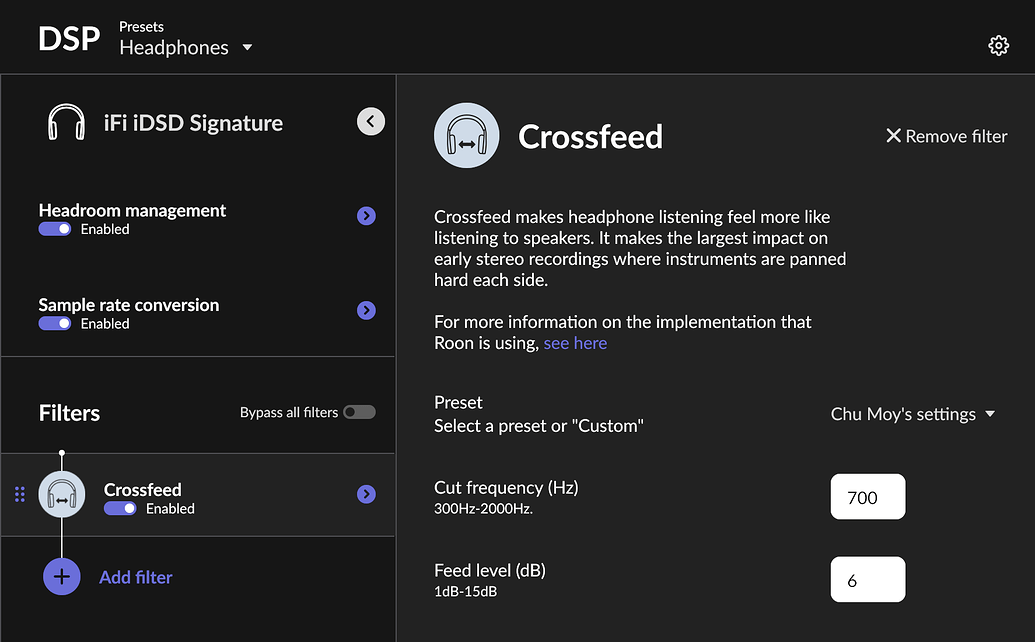

I'm keen to hear others' experience with Crossfeed, as at the moment I am finding I have a strong preference for no crossfeed on the vast majority of the music I listen to. The left crossfeed signal is mixed in with the right channel’s direct signal (and vice versa) at a level about 8dB lower. It’s true that the absence of crossfeed while mixing on headphones can potentially lead to problematic stereo field choices. On headphones you have no awareness of how the sounds from the two speakers blending affects your mix. Listening to music via headphones is not as natural as listening through speakers or a at a l. The current HeadRoom crossfeed circuit uses a two-stage active filter that provides about 400 uSec of delay and a gentle frequency response roll-off starting at about 2 kHz. This is what leads engineers to claim that mixing on headphones gives your tracks an unrealistic feel. I did not expect a significant change in the tonal balance nor the burying or complete loss of certain instruments/effects. Why you probably want to use crossfeed for headphone listening. To be able to judge a mix via headphones, the super stereo effect, which affects the placement of voices and instruments in the stereo image and also reverb rooms and the generally exaggerated. Maybe I misunderstood what crossfeed is but I was expecting a slight narrowing of the soundstage to make sounds appear more front & central and less at the extreme horizontal peripheries, to reduce fatigue from hard-panning. Headphone outputs with Crossfeed The 2 Control is equipped with two active output stages for headphones, whose level can be individually adjusted. As well resulting in a thinner tonal balance, certain instruments in the mix become buried or are often removed entirely. This is my first encounter with crossfeed so I had no idea what to expect, but I must admit I am a little underwhelmed with the effect.Įven on minimal settings, engagement of the Crossfeed/Angle matrix leads to significant cancellations, especially in the mid frequencies. 150 crossfeed is technically more lifelike (see the Mix Engineer, Lifelike preset), but it can sound overly narrow on some headphones. It’s quite lifelike and perceptually matches a real-world set of studio monitors very closely. 8 channel inputs will simply be downmixed beforehand.

Headphone crossfeed full#
It is thus not as powerful as full HRIRs but will change the audio less and then may sound more familiar. I am currently demoing an SPL Phonitor 2 headphone amp as I was intrigued by the triple matrix (Crossfeed/Angle/Center) it features to bring the headphone listening experience closer to that of conventional loudspeakers. Crossfeed 100, 60 is a great place to start (the Mix Engineer preset). Crossfeed is a way older technique than virtualization and is made to make classic stereo content less fatique for headphone users. For headphone-listening, Hugo 2 retains the popular digital crossfeed function of the original and offers three operation modes.


 0 kommentar(er)
0 kommentar(er)
